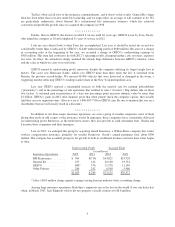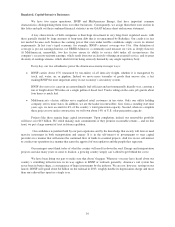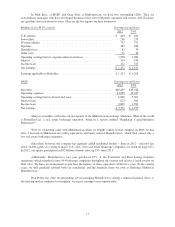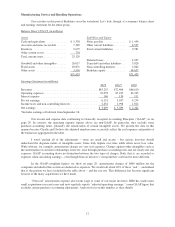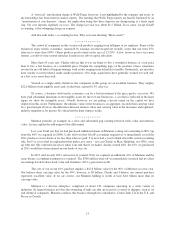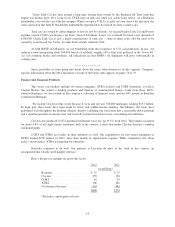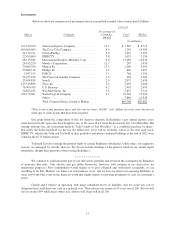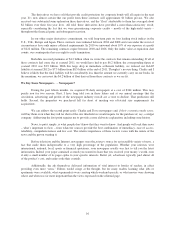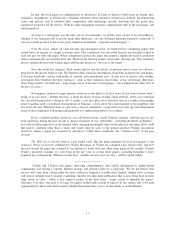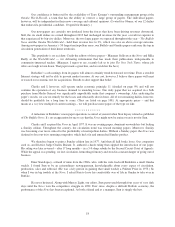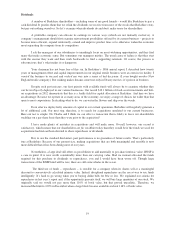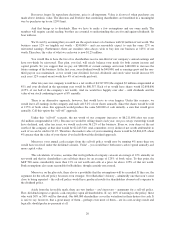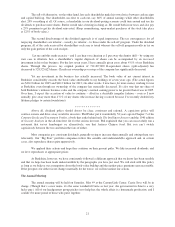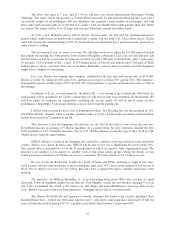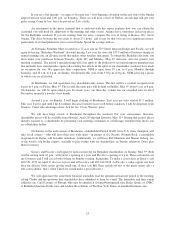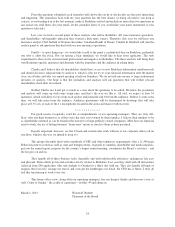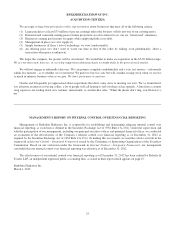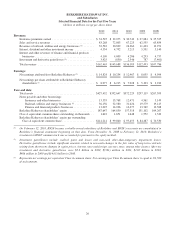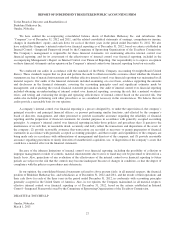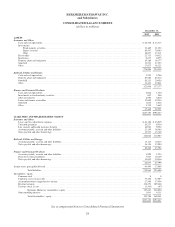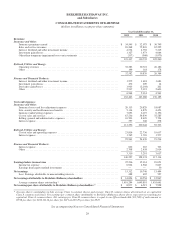Berkshire Hathaway 2012 Annual Report Download - page 21
Download and view the complete annual report
Please find page 21 of the 2012 Berkshire Hathaway annual report below. You can navigate through the pages in the report by either clicking on the pages listed below, or by using the keyword search tool below to find specific information within the annual report.Dividends
A number of Berkshire shareholders – including some of my good friends – would like Berkshire to pay a
cash dividend. It puzzles them that we relish the dividends we receive from most of the stocks that Berkshire owns,
but pay out nothing ourselves. So let’s examine when dividends do and don’t make sense for shareholders.
A profitable company can allocate its earnings in various ways (which are not mutually exclusive). A
company’s management should first examine reinvestment possibilities offered by its current business – projects to
become more efficient, expand territorially, extend and improve product lines or to otherwise widen the economic
moat separating the company from its competitors.
I ask the managers of our subsidiaries to unendingly focus on moat-widening opportunities, and they find
many that make economic sense. But sometimes our managers misfire. The usual cause of failure is that they start
with the answer they want and then work backwards to find a supporting rationale. Of course, the process is
subconscious; that’s what makes it so dangerous.
Your chairman has not been free of this sin. In Berkshire’s 1986 annual report, I described how twenty
years of management effort and capital improvements in our original textile business were an exercise in futility. I
wanted the business to succeed and wished my way into a series of bad decisions. (I even bought another New
England textile company.) But wishing makes dreams come true only in Disney movies; it’s poison in business.
Despite such past miscues, our first priority with available funds will always be to examine whether they
can be intelligently deployed in our various businesses. Our record $12.1 billion of fixed-asset investments and bolt-
on acquisitions in 2012 demonstrate that this is a fertile field for capital allocation at Berkshire. And here we have
an advantage: Because we operate in so many areas of the economy, we enjoy a range of choices far wider than that
open to most corporations. In deciding what to do, we can water the flowers and skip over the weeds.
Even after we deploy hefty amounts of capital in our current operations, Berkshire will regularly generate a
lot of additional cash. Our next step, therefore, is to search for acquisitions unrelated to our current businesses.
Here our test is simple: Do Charlie and I think we can effect a transaction that is likely to leave our shareholders
wealthier on a per-share basis than they were prior to the acquisition?
I have made plenty of mistakes in acquisitions and will make more. Overall, however, our record is
satisfactory, which means that our shareholders are far wealthier today than they would be if the funds we used for
acquisitions had instead been devoted to share repurchases or dividends.
But, to use the standard disclaimer, past performance is no guarantee of future results. That’s particularly
true at Berkshire: Because of our present size, making acquisitions that are both meaningful and sensible is now
more difficult than it has been during most of our years.
Nevertheless, a large deal still offers us possibilities to add materially to per-share intrinsic value. BNSF is
a case in point: It is now worth considerably more than our carrying value. Had we instead allocated the funds
required for this purchase to dividends or repurchases, you and I would have been worse off. Though large
transactions of the BNSF kind will be rare, there are still some whales in the ocean.
The third use of funds – repurchases – is sensible for a company when its shares sell at a meaningful
discount to conservatively calculated intrinsic value. Indeed, disciplined repurchases are the surest way to use funds
intelligently: It’s hard to go wrong when you’re buying dollar bills for 80¢ or less. We explained our criteria for
repurchases in last year’s report and, if the opportunity presents itself, we will buy large quantities of our stock. We
originally said we would not pay more than 110% of book value, but that proved unrealistic. Therefore, we
increased the limit to 120% in December when a large block became available at about 116% of book value.
19


